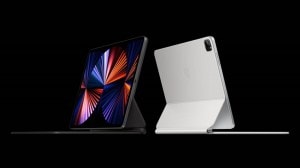- India
- International
All Rounder: Asus Fonepad
Intel finally enters the tablet segment with the Asus Fonepad.
Intel finally enters the tablet segment with the Asus Fonepad
By the time Intel decided to step into the tablets segment,most mobile devices already use Apple,Qualcomm or MediaTek processors. But the market is still expanding at a rate of almost 20 per cent a year,so it isnt too late for Intel to establish itself. After partnering with Lava to launch Intel-based Xolo phones,the company is now targeting the tablet segment.
Asus Fonepad is an Intel-powered seven-inch tablet that can make phone calls. Although it looks too big to use as a phone,itll ride on the popular appeal of similar devices in India. Such tablets have been selling more units than their non-calling counterparts across India because one device is easier to carry around. Fonepad costs Rs 15,999,which makes it a direct competitor of the Samsung Galaxy Tab 2. Until Samsung launches the Tab 3 in India,Fonepad has a clear advantage over its nearest rival.
Display,build and design
Although it is sleek,the Fonepad looks like any other seven-inch tablet in terms of design. At the top of the back panel,there is a sliding flap,under which the micro SIM and micro SD cards are placed. The only buttons on the Fonepad are to control the volume and lock the screen. The device feels good to hold and is fairly light at 340 gram.
The 1,280×800-pixel display reproduces colours accurately. Those used to Apples Retina display or similar high-resolution variants will be disappointed because,at 216 pixels per inch,the Fonepads screen doesnt have that level of clarity. There are four virtual buttons at the bottom of the screen back,home,switch between and a shortcut to apps. The touchscreen is responsive and there were no input problems while using the device. The display,however,is a fingerprint magnet and users will need to clean the screen at least once a day.
Software

Fonepad runs on Android Jelly Bean (4.1),but almost half of its 8GB internal memory is taken up by pre-installed apps. Users should buy a microSD card to install apps and,thereby,not choke the tablets internal memory. Asus has not customised the Android UI too much,which makes the system snappy. There are a few nice touches,such as quick access to four favourite apps and 5GB free space on ASUS Webstorage. Asus has promised to update this tablet to the Android 4.2 operating system.
Performance
Intels Atom Z2420 processor performs well. There were no lags while using Fonepad. It handled heavy games such as CSR Racing with ease (except that it crashed once on low battery). Multi-tasking was smooth and switching between multiple heavy apps was snappy.
The sound quality on the earphones is good,but the speaker could have been louder. If you plan to use Fonepad for making calls,buy a Bluetooth headset because holding it to your ear is inconvenient.
There were no issues with reception or call quality with and without the headset.
The device has a front and a rear camera,which is good news for those who like to use video calling. The picture quality is acceptable,but not great,though Skype works well on it.
Fonepad takes over four hours to charge,but lasts long. After moderate browsing,gaming and a few phone calls,the battery ran out after almost two days. Intel has made an impressive entry into this segment with the Fonepad. The companys best processors in this segment are scheduled to hit the market only next year and we can expect tough competition.
May 02: Latest News
- 01
- 02
- 03
- 04
- 05





































